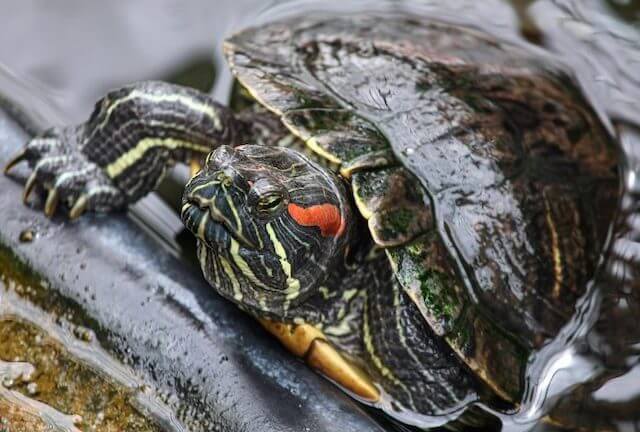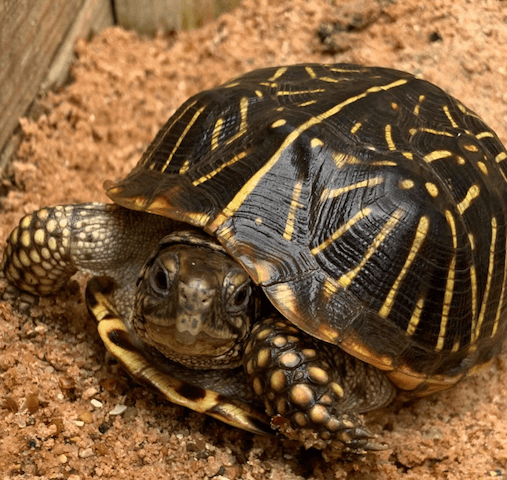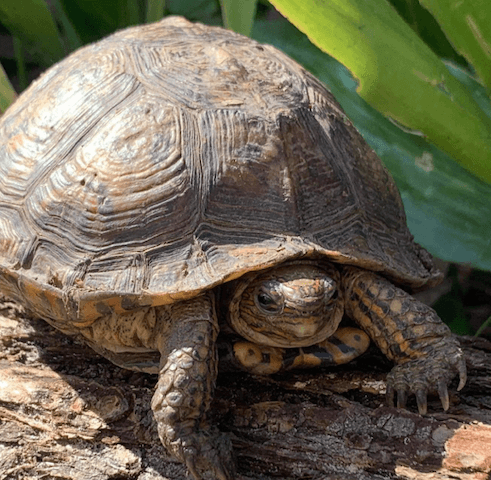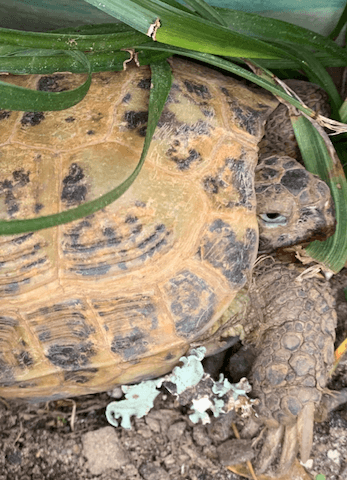During this time of year most pet Tortoises and Turtles hibernate outside by either burrowing under the earth or staying underwater depending on the species. Some Tortoises however, have to come inside for the winter where they can stay warm. Some pet parents place their hard shelled friend in a bathroom or a tub while other’s create an enclosure in their garage that includes heaters to keep their reptilian friend warm. Here are some other tips for those that might be considering a turtle as a pet.
The first thing to consider is the long term commitment required of caring for a tortoise as most can live 80 – 150 years depending on the specific species. This means that you might want to include such a pet in your Will as they might outlive you! When researching different species there are a number of Facebook groups for Russian and Hermann Tortoises. Checking with a local veterinarian that specializes in exotic pets is also a sound strategy.
Habitat is another important consideration when caring for a Tortoise/Turtle. Depending again on the specific species, you will want to provide a sizeable, e.g., 8×8, etc., outdoor or indoor enclosure filled with soil which is a natural substrate for Mediterranean species. Mixing some coconut fiber with the soil allows them to dig down (a very natural behavior for them) and to self-maintain their nails. Some Turtles, like the Red-Eared Slider Turtle will also require a water pond (if outdoors) or an aquarium (if indoors). When housing your Turtle indoors it is important to provide UVB and heat for 12 hours per day. Moreover, it is recommended to have a warm side (86° F) and a cool side (70° F). Using a UV basking build is recommended. It is not advised to use coil or red builds as they tend to negatively affect their eyes. In both outdoor and indoor enclosures, providing plants to hide under or eat is advised.
Speaking of eating, Tortoises/Turtles are herbivores requiring a diet that is high in fiber, rich in calcium and low in protein, fat, carbohydrates and sugar. They should eat a diet consisting of weeds, plants and flowers. There is an app called “Tortoise Table” where you can search plants and flowers in your garden to determine if they are “no feed, moderate feed or everyday feed” for your Tortoise. A mix of lettuces from the grocery store or local farmers market is also a good source of food.
Finally, a shallow dish of lukewarm water (a little past the bottom of their shell) in your Tortoises’ environment is a must so they can soak twice a week. Additionally, a soft bristled toothbrush can be used to scrub the shell when it gets really dirty. This is also something they will enjoy.
This article was adapted from a story in PSI’s Pet Sitter’s World Magazine Sep/Oct 2020 by PSI member Alexina O’Brien titled “Tortoise Tips.”




